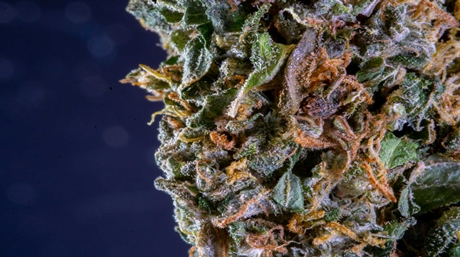It is essential to choose a strain of cannabis that is more likely to produce dense buds. Overall, Indica strains tend to produce denser buds than Sativa strains. Sativa is usually long, sausage-shaped buds. Indica is usually dense and has bulbous buds. This allows for the Indica to produce, generally, denser buds than Sativa.
When looking for denser strains, don’t necessarily choose a pure Indica. Many cannabis strains are mixes of the two strains. Instead, what you want to look for is an Indica-dominant strain. The Indica-dominant strain should be able to produce a very dense bud.
Cannabis plants need light to grow. Light is a significant factor in the development and health of your marijuana and the denseness of your buds. Therefore, you want to ensure that your plants have all the light they need to grow. Remember that you don’t want to be blasting your plants 24 hours a day. Your plants are living things and also need downtime.

You want to put your lights in the best position possible. You do not want your lights to be too close to the tops of your plants. This could cause them to overheat or even burn. You also do not want them too far away, as this will not allow the light to produce maximum results.
Therefore, you want to adjust your lights so they are not too close to, and not too far away from, your plants.
Ideally, you want your lights far enough away from the tops of your plants that the entire canopy of your grow area receives good light. You also want them to be far enough away that they don’t burn the plants.
A good guide is located at the end of your arm. Place your hand just above the tops of your plants. If the heat is too much for your hand, it is too much for your plants. Alternatively, and probably better, you can place a thermometer at the top of your canopy. This will give you a good idea of the temperature at that height.
As your plants grow, you will need to adjust the height of your lights to match them.
Your plants may grow in your garden, or indoor grow space. But at one time, their ancestors grew outside. Those seeds you planted are the descendants of wild cannabis. Like all wild plants, they were lit by the sun. This means that the natural growth cycle involves time spent in the dark.
You will need a schedule for your cannabis plants. Of course, this is more important for feminized plants than auto-flowering plants. When your cannabis plants are vegetative, light them for 18 hours and let them have the darkness for 6 hours. When cannabis plants begin to flower, light them for 12 hours and give them darkness for twelve hours.
The plants begin to flower when they have longer periods of darkness. During the vegetative, or growth period, you can light them up to 24 hours a day, but you want to save a little money on your electric bill, right?
The term ‘feminized weed’ refers to cannabis plants that have been genetically modified to produce exclusively female plants. The primary advantage of utilizing feminized weed seeds lies in their propensity to yield almost entirely female plants, thereby eliminating the necessity to identify and remove male plants from your cultivation.
This efficiency can lead to a substantial increase in your yield, as each plant you nurture contributes to the production of buds. Feminized seeds may not exhibit the same resilience to environmental stress as regular seeds, necessitating more careful attention to ensure their healthy growth. The term ‘feminized seeds’ is simply an alternative nomenclature for these specially engineered seeds.

One way to maximize the effect of your lighting is to surround your plants with reflective material. You don’t want to use something that will intensify the light or concentrate it in one spot. Something that bounces the light around will help to get the light to more than just the canopy. More light on the underside of the plant will help with photosynthesis. White plastic or Mylar is a good reflective wall that aids in bouncing light.
The color spectrum of your light can also play a role in the growth of your cannabis buds. During the flowering stage, your plants better synthesize light in the spectrum’s red end. Using light with red enhancement will help your cannabis plants grow better during the flowering stage. Make sure that the light is a full spectrum light with red enhancement.
Growing your cannabis outside provides the best lighting possible for your plants, the sun. Growing your cannabis outside does have its potential difficulties. You want to ensure that your cannabis plants are planted where they can get correct exposure to the sun.
Many growers try to plant their cannabis so that they get maximum light during the morning and evening and are shaded when the sun is at its strongest.
Temperature is a key factor that can impact the health and growth of your buds if you do not keep an eye on it. You must check the temperature of your grow area regularly to ensure it is within the correct range. The ideal temperature to keep your cannabis plants at is between 18 to 25°C (65 to 77°F) and should never go above 30°C (86°F). If a plant gets too hot or cold, it can negatively affect the flowering process.

Improperly feeding and watering your plants can create a huge problem with your plants. Too much water and nutrients can be problematic, while not enough of these can diminish the growth of your plants.
Overwatering your plants can cause root rot, which will seriously diminish the quality of your plants. It can even kill them if you continue to practice overwatering. If you need to know if your plant needs water, check the soil. If the soil is dry, water your plants. If the soil is damp, then do not water.
As far as feeding goes, each plant is different. You will want to ensure you have a good feeding process for your specific cannabis plants. In general, cannabis plants need different amounts of nutrients during the different stages of growth. The plants will usually need more nitrogen early, during the vegetative stage. They will also usually need more potassium and phosphorus during the flowering stage.
I always recommend researching the strain of cannabis you are growing. This way, you will get a better idea of what your specific plant needs.
High levels of humidity in your grow space can destroy your entire crop. You want to keep your humidity where your cannabis plants are growing below 60% relative humidity. You will want to reduce this in the last few weeks to about 45%. Keeping your plants within this range will help to produce denser buds on the plants and to deter mold and fungus growth.
Growing cannabis plants at the level where you are consistently producing quality, dense buds can be challenging, but it is not impossible. It will take time to learn the skills necessary to produce the results you are looking for consistently. Take your time. Have patience. Learn from mistakes and build on what you do right. Soon you will be producing yields of fat, dense cannabis buds.














Related Posts

Have you ever seen a cannabis plant with bug buds growing above a nylon screen? Well, that screen is referred to as a screen of green or a ScrOG in short form.

Welcome to the exciting world of cannabis and cryptocurrency! BTC and marijuana make the perfect match, offering a seamless and secure way to purchase weed seeds and accessories.

When it comes to cultivating cannabis, finding affordable yet high-quality marijuana seeds can be a game-changer. Whether you’re a seasoned grower or a beginner, this comprehensive guide will walk you through everything you need to know about cheap marijuana seeds.